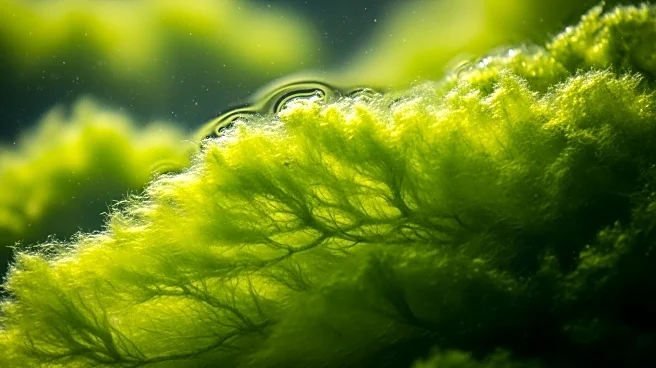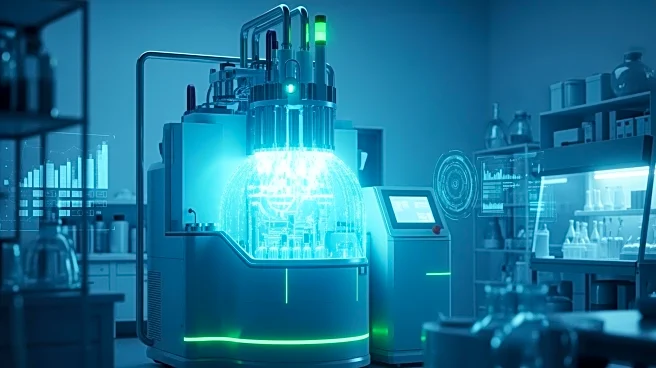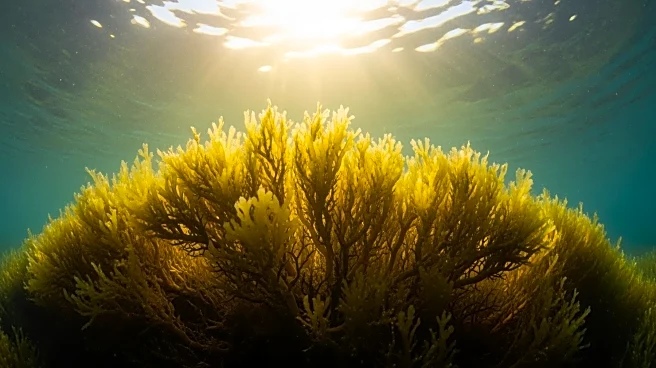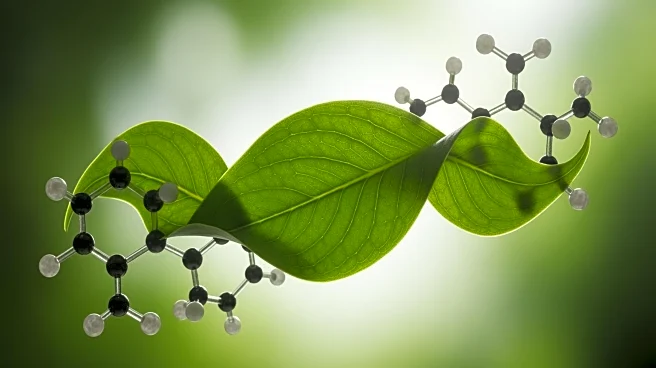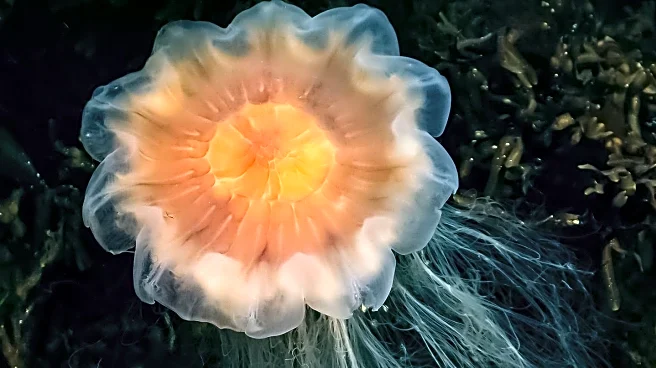What's Happening?
Researchers from Osaka Metropolitan University have discovered a unique mechanism in marine green algae that allows them to continue photosynthesizing efficiently under intense sunlight. The study identifies a pigment called siphonein, which helps protect
the algae from the harmful effects of excessive light. This pigment is part of the algae's light-harvesting complexes (LHCs), which absorb sunlight and convert it into energy. Under high light conditions, chlorophyll can enter a 'triplet' state, producing reactive oxygen molecules that can damage cells. Siphonein helps dissipate this excess energy, preventing damage.
Why It's Important?
This discovery is significant as it enhances the understanding of photosynthesis, particularly in marine environments where light conditions can be extreme. The findings could have implications for the development of bio-inspired solar technologies, potentially leading to more efficient and durable renewable energy solutions. By mimicking the algae's natural protective mechanisms, new solar technologies could be designed to withstand intense sunlight, improving their longevity and efficiency.
What's Next?
The research team aims to further investigate the structural characteristics of carotenoids like siphonein that increase quenching efficiency. This could lead to the molecular design of pigments that optimize photosynthetic antennae, potentially revolutionizing solar energy technology.
